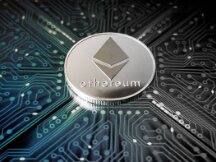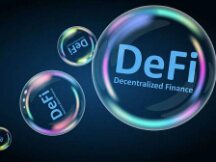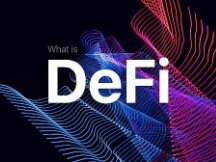Create Bitcoin Based DeFi Application, "Portal" Launches Layer 2 DEX Cross-Chain

When we talk about DeFi (decentralized finance), we usually focus on ecosystems like Ethereum, BSC, Solana, etc.
Bitcoin, the representative asset of the cryptocurrency market, is rarely mentioned. The Bitcoin network appears to have become more segregated by the use of technology in the market and has become a symbol. Behind this is the limited performance and limitations of the Bitcoin network itself, but it is also an event unaffected by further increases in the general chain and content. The above demand is represented by Ethereum.
Recently, Odaily World Daily focused on the DeFi protocol called Portal Finance, which is dedicated to maximizing the efficiency of the Bitcoin network and introducing DeFi into the Bitcoin ecosystem.
Portal is a standalone layer of 2 wallets and a cross-chain DEX built on Bitcoin to complement the atomic exchanges of Bitcoin and other crypto assets. Going forward, Portal will also support commercial derivatives like loans and options to simplify DeFi application scenarios. Portal recently announced that it had raised $ 8.5 million in funding, led by Coinbase Ventures, and several other organizations, including B21 Capital, have joined the investment.
Eric Martindale, CEO of Portal, said: “By sharing Layer 2 peer-to-peer speed, the portal has delivered on its promise of management for everyone.
For a long time, the ecological value of Bitcoin was ignored by the market. Now, is accessing the portal increasing the Bitcoin DeFi value and pushing the entire DeFi industry to a higher level of improvement?
Bitcoin Network Has No DeFi Race
Today, the huge DeFi (decentralized finance) market has grown bigger and bigger and it is slowly breaking the cycle, attracting favor from the elite. However, there are still major limitations to DeFi improvements.
Speaking of data only, DeFi's total closing costs now stand at $ 260 billion, a significant change from over a year ago, but still not enough. A very important reason is that currently the DeFi ecosystem is not fully integrated with Bitcoin.
Bitcoin, a major asset in the crypto industry, has reached a market value of over $ 1,000 billion in just 10 years, accounting for 40% of the total crypto market value. Although the market value of gold does not exceed $ 10 trillion, the growth potential of Bitcoin is clear. Additionally, Bitcoin itself has strong resilience, has strong fundamentals, and has become a new asset recognized by mainstream financial institutions. Many venture capital and financial firms, including Tesla and Microstrategy, use Bitcoin as a viable asset.
Bitcoin has become one of the most valuable assets of traditional financial and crypto currencies. However, in this wave of DeFi, Bitcoin took its tail and slowly marginalized itself, without all the green DeFi app and resulted in inactivity. For an asset that plays an important role in the global financial system, it must be fatal.
Based on the research, we have found that the lack of Bitcoin DeFi app is mainly due to its drawbacks. Bitcoin Script is a simple, original and secure script, which makes creating applications very difficult because it is not Turing-complete and does not have a state-of-the-art concept. In addition, with the rise of new ecosystems like Ethereum, the market will turn its attention to new chains. As a result, the Bitcoin ecosystem lacks basic building tools, which are not required to develop DeFi applications. Additionally, due to the negative cycle that developed, the original DeFi app from the Bitcoin ecosystem did not come, while new public DeFi apps skyrocketed after the rains.
Currently, the most popular Bitcoin DeFi solutions on the market are “tokenized Bitcoin”, the most representative of which are WBTC and tBTC.
For example, WBTC, users need to keep BTC in place in the contract to get the ERC20 version of WBTC 1: 1. The uncertainty regarding this plan is concentrated in the middle. Users should go through the KYC process and trust a third-party administrator. The tBTC mETHod is for users to deposit BTC to a fiat address and the trustees to deposit ETH to get the ERC20 version of tBTC. Although this process does not require reliability, it does require great responsibility on the part of the supervisor and a low cost.
Due to various restrictions, the "tokenized bitcoin" method is not designed for size. Taking WBTC as an example, the current revenue is 253,000, which is less than 2% of Bitcoin's total revenue. This means that most Bitcoin is abandoned by DeFi, the old cost of income is not high, and the DeFi needs of most Bitcoin enthusiasts are not being met.
Today, exchange media face more stringent regulatory requirements and DeFi has become another viable option. How to meet the DeFi needs of Bitcoin enthusiasts is both difficult and time consuming.
“Bitcoin has a significant impact on the network. A lot of people don't know how strong Bitcoin is. Bitcoin is the most decentralized and secure system. We believe it is a valuable currency. Transactions, financial commitments, etc. It's better to develop the financial system and not the next layer. ”Portal CEO Eric Martindale explained that the Bitcoin network itself, according to POW, has security that other ecosystems cannot, and is also the best DeFi test site.
Based on this, the portal decided to develop a Bitcoin-based DeFi application to maximize the efficiency of the entire network and facilitate the integration of DeFi business with traditional finance. . Bitcoins can be easily used anywhere in the world. to call ".
Portal: Layer2 Cross-Chain DEX, Bitcoin DeFI support
Portal is a distributed financial system that combines the strengths of Bitcoin and Layer 2. Thanks to the Portal, Bitcoin is compatible with the characteristics of decentralized finance such as non-censorship, peer-to-peer and low reliability. .
The first deployment of the Application Portal is the Layer 2 Autonomous Wallet and Cross-Chain DEX allowing Bitcoin to have an atomic exchange of Bitcoin and other crypto assets. The advantage of this solution is that it uses the Bitcoin "Hash Time Lock Contract" feature, which means users can manage their assets and be friendly. It protects the party from the risk and loss of investment in the pool.
In fact, before Portal, Atomic Swaps was the experimental solution for the Bitcoin DeFi app, tested and seen by groups like Summa, Liquality, SparkSwap, Swap Online. However, most of them have disappeared or changed.
The main reason is that 'atomic swaps' allow users to control their assets, but before a deal can be made, participants know the bitcoin addresses, and the Metal crossing chain is also difficult, for example without Automated Market Maker. (AMM) and without income. . Providers must be online 24/7 to allow participants to interact with any type of Bitcoin DeFi.
The portal has been updated in the past and developed an example of an order book that combines the products of the merchant network by homogenizing and comparing orders across the market using a knowledge system. void and complete documentation of order processing. At the same time, full orders and combinations were entered in the chain connecting atomic swaps. It should be noted that Portal provides cross-chain contract credentials to complete phase 2, resulting in faster, lower cost, and higher capacity.
According to the portal's plan, in the future, users will be able to conduct business transactions by accessing the portal software, and the system will see the best way to do it (the best price) on rooted and distributed platforms such as Binance, Coinbase and UniSwap. . liquidity trading). "Portal will be the only app approved for Atomic Exchange on the Apple App Store."
In addition to cross-border trading, Portal plans to launch trading derivatives such as loans and options to meet the various needs of Bitcoin enthusiasts.
To support this rich process, Portal could not do without Fabric protocol support.
Fabric itself is an open source process for the Bitcoin-based anti-censorship layer which can be understood as Bitcoin's Layer2 solution. The portal is made of cloth (Note: The portal design team is made of cloth). As a result, the portal has gained many advantages from Fabric, such as anti-censorship, high performance, reliability, financial and chain integrity, and at the same time security from Bitcoin Layer 1.
However, from the perspective of the Portal team, Lightning Network is Bitcoin Phase 2 and Portal and Fabric is the real Phase 3. Both have the same network topology, but the latter is focused on top computing. level. "L2 is the bottom. Layer is just the beginning, L3 is the math layer and can be created. The fabric is designed to be a three tier system that relies on Lightning / Payment etc. We will see the birth The goal The new app is to connect to the Lightning Network and run the portal node. You can connect directly to the Lightning Network. "
The information below used by the portal extends the capabilities of Bitcoin today without BIP. The portal's Layer 2 and Layer 3 atomic exchange technology can be used in a wide variety of data and applications. It is an intermediate model of network server which is easy to install and configure, ”he said on the official website.
In addition, Portal is only an application of the Fabric protocol, and in the future, Portal hopes that developers can develop P2E games and provide a new fabric asset, and Portal will become the platform for this industry. 'assets.
The professionals behind the team are drawn to the best investors
“Currently, middleman exchanges, unfair 'decision-making' DEXs, regulatory volume of tokens, and censurable ecosystems all threaten Bitcoin's promise of self-reliance. Building a portal for free and financial business,” concludes Eric. Martindale.
The portal innovations and general plans have also benefited many investment firms.
Portal announced on Monday that it has oversubscribed more than 47 $ 8.5 million financial firms led by Coinbase Ventures, B21 Capital, ArringtonXRP Capital, OKEx Blockdream Ventures, Republic.co, Shima Ventures, LD Capital and ArkStream Capital, respectively, as as legal documents. Capital, Genbloc, Taureon, Autonomy Capital, Crypto, Hedera Hashgraph Co-Founder, Kill Armor, Tether Crake Sellas Co-Founder and Bitcoin.com CEO Danish Chodry join the investment. The portal will also soon organize a public offering in the Republic.
As a team of six, the portal team has been involved in the integration for many years and has extensive business experience, providing resources for the future development of the portal.

For example, co-founder and CEO Eric Martindale has been working on Bitcoin for 10 years, opening the role of CEO of Blockstream, CTO of BitPay, consultant at Lemniscap and founder of Fabric. Director Jack Mills has worked for CasperLabs and Intel Corporation., Appgenesys and other well-known companies or positions, Founder and CTO of Locke-Rand Institute, Vice President of the Salvus Group and Founder of the Board of Directors. Led by GoalWerks Inc.. CEO and CEO, Vice President of Aditas and others.
As the premier blockchain ecosystem, Bitcoin has always been a leader in the crypto industry and has grown into one of the most successful and profitable, but never so successful in the DeFi arena.
Access to the portal now opens new avenues for Bitcoin to access DeFi while also allowing DeFi to gain a foothold and support DeFi in the mainstream world. We look forward to seeing new portal activities in the future.

Scan QR code with WeChat































